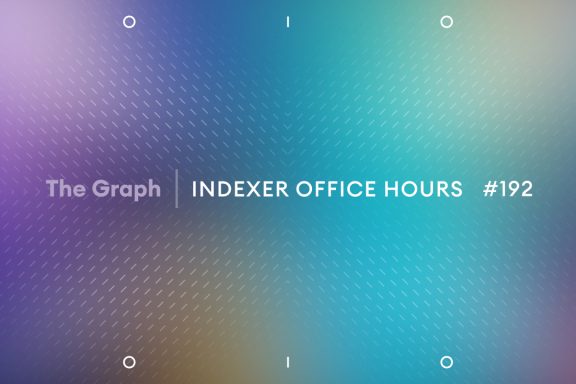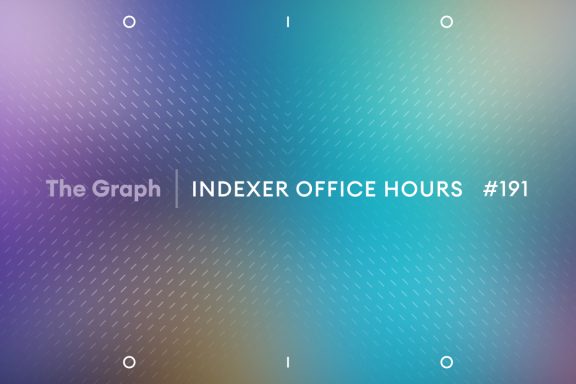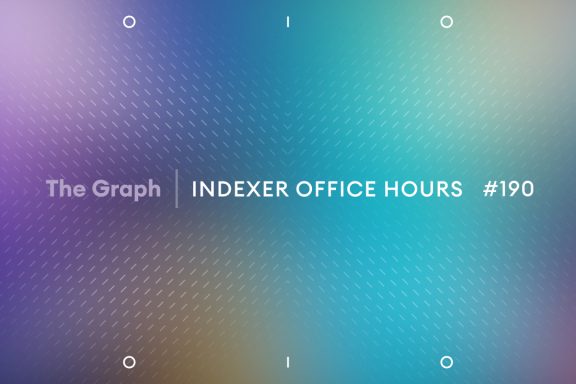Unlock powerful analytics with Messari standardized subgraphs.
TL;DR: Led by Dylan from Messari, this session provides an in-depth exploration of subgraphs, covering their critical role in data analysis, the tools for building and managing them, and how to contribute to the Messari subgraph repository, emphasizing community and open-source development.
Builders Office Hours session #9 was a standout event, featuring Dylan Melotik from Messari as the special guest. As an engineer with over a year’s experience at Messari, Dylan is a well-recognized figure in the blockchain and decentralized finance arena. His presentation was a deep dive into the intricacies of subgraph development, showcasing his extensive knowledge and expertise in this niche. It was amazing to gain insights from someone so deeply embedded in this cutting-edge field.
The essence of Messari subgraphs
The session kicked off with Dylan emphasizing the significance of Messari subgraphs. He highlighted their extensive coverage, indexing over 100 protocols, and the depth and breadth of data available. This comprehensive data collection is a goldmine for analysts, providing detailed insights into various protocols at multiple levels. If you like to dive into further information please see more at Messari’s GitHub and dashboard of subgraphs.
The power of standardization
A key takeaway from Dylan’s presentation was the importance of standardization in data analysis. Messari’s approach to creating standardized schemas facilitates easier data integration and analysis across different protocols. Standardization allows you to send the same query to multiple subgraphs that previously may not have been possible since each project may use different terminology within their schema. This standardization is crucial for developers and analysts who rely on consistent and reliable data for their projects.
Building with Messari subgraphs
Dylan walked us through the process of building subgraphs, showcasing the open-source nature of Messari’s work. He provided valuable insights into the use of their CLI tool and the extensive documentation available for developers. This segment was particularly enlightening for builders looking to leverage Messari’s subgraphs for their projects especially for those who work with data analytics.
Incorporating Substreams for enhanced capabilities
In addition to the tools discussed by Dylan, Messari also now leverages Substreams-powered subgraphs to enhance their analytical capabilities and streamline data processing workflows. These advanced subgraphs allow for more nuanced data parsing and have significantly accelerated Messari’s data indexing capabilities.
Vincent Wen, Engineering Manager at Messari, attests to their impact:
For our team, Substreams has been a game-changer in radically improving the indexing speed and composability of subgraphs. It’s given us much faster development velocity and shorter iteration cycles.
By integrating Substreams, Messari has not only optimized its existing workflows but has also expanded its analytical horizons, merging the robustness of The Graph’s GraphQL with efficiency. Messari has adeptly used Substreams for a variety of projects, including:
- Compound V2: Deciphering the complexities of DeFi lending markets.
- ENS: Monitoring Ethereum Name Service activities.
- Token Dynamics: Tracking with ERC20 and ERC721 subgraphs.
- ETH Balances: Maintaining vigilance on Ethereum balances.
- Uniswap V2: Analyzing liquidity and trade flows.
These Substreams exemplify the practical application of this technology in creating efficient, scalable data solutions.
Q&A highlights
The Q&A session was buzzing with inquiries from attendees. Questions ranged from the specifics of building subgraphs to the types of contributions most needed in the community. Dylan’s responses shed light on the collaborative nature of the subgraph development process and the opportunities for new developers to contribute.
The future of subgraph development
Dylan’s session was not just about the current state of subgraphs but also a look into the future. He discussed the potential for new developments and the ongoing need for contributions from the community, especially from those with a background in data science and programming languages like Python and SQL.
Closing thoughts
As the session wrapped up, Dylan’s enthusiasm and expertise were evident. His willingness to engage with the community and provide guidance on subgraph development was invaluable. For those looking to dive deeper into the world of subgraphs, Dylan’s insights and Messari’s resources are a great starting point.
If you’re interested in attending The Graph Builders Office Hours, join The Graph’s Discord and check the events. View previous recordings on The Graph’s YouTube channel.








No Comments